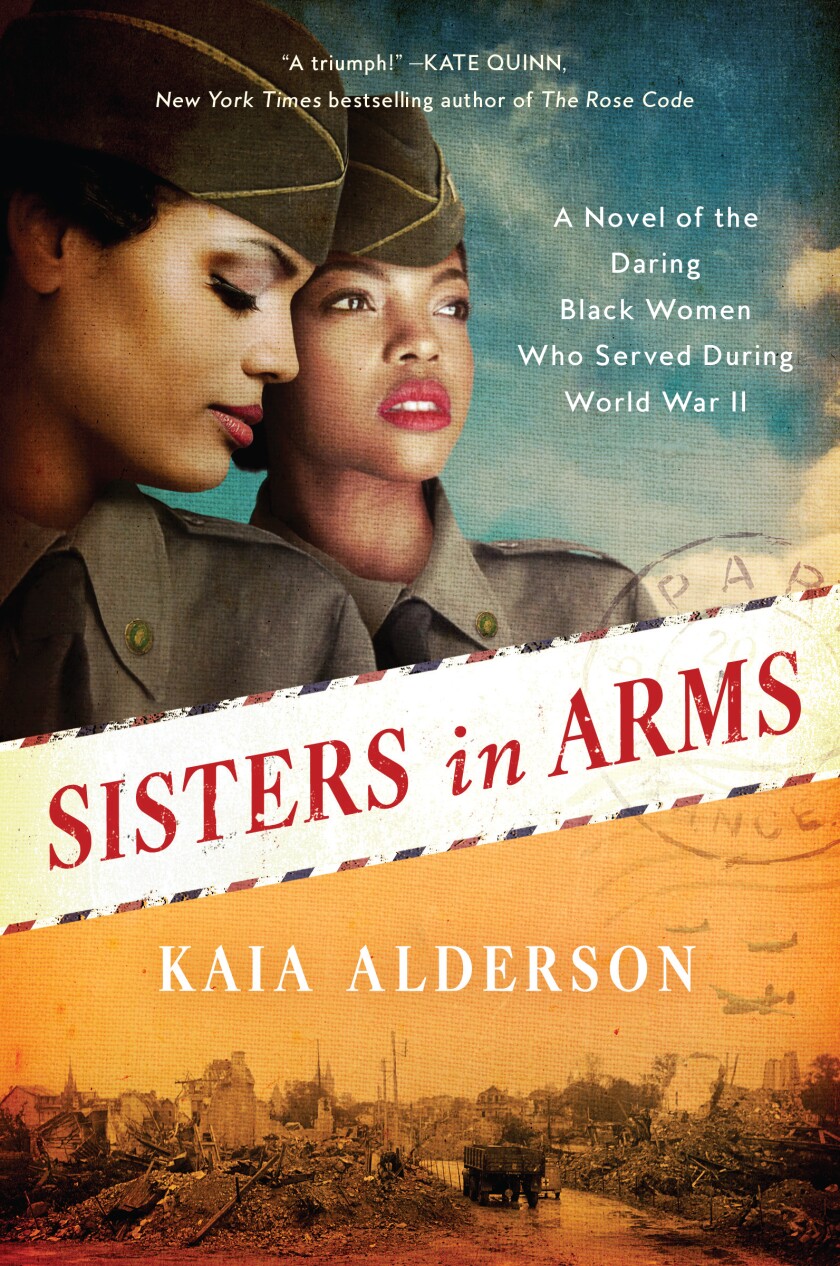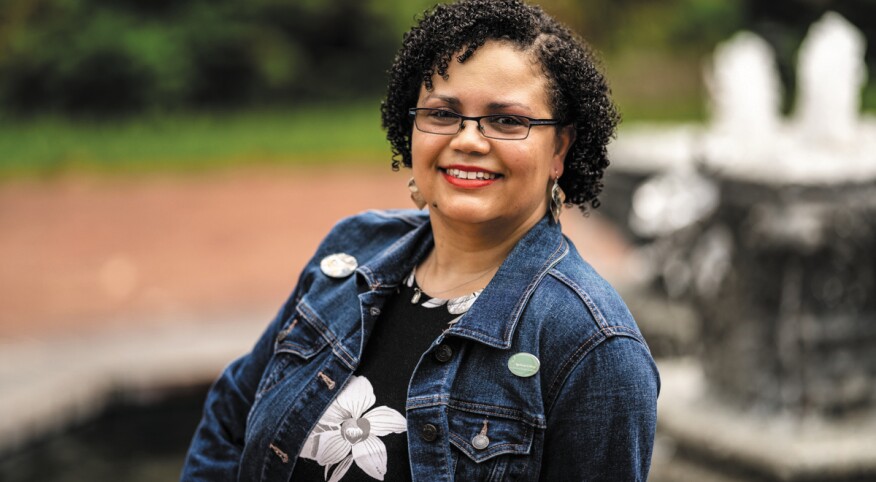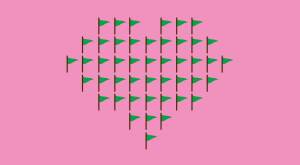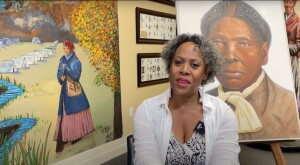Update on August 26, 2021: This book sweepstakes has now closed.
How often do you get to read stories of Black excellence in American history? If the answer is not enough, you may adore the new novel by author Kaia Alderson, which is inspired by historical events but intentionally fictional.

In Sisters in Arms: A Novel of the Daring Black Women Who Served During World War II, Alderson tells the story of two Black women from completely different backgrounds who are among the first class of female officers the army has ever seen and the first Black women allowed to serve.
Segregation was still in full force during World War II, and this fictional story has its roots in real American history. When the Army created the Women’s Army Corps, women stepped up to do a variety of critical Army jobs in order “to free a man to fight” during World War II, the U.S. Army reports. Say what you will about the marketing, but these women worked in hundreds of fields like military intelligence, cryptography, maintenance and supply and more.
As Alderson tells Sisters, she drew her inspiration from the stories of Black women who served. One of those women was Lt. Col. Charity Adams Earley, who commanded the 6888th Central Postal Directory Battalion in England as a major. Her battalion ensured the delivery of millions of letters, despite segregated living conditions, the National Museum of the United States Army confirms. And Earley also “served as the highest-ranking Black woman officer during World War II,” the museum notes.
In Alderson’s novel, however, the two protagonists are Grace Steele and Eliza Jones. Both characters (one musically inclined and the other with legacy experience in journalism) join the Women’s Army Auxiliary Corps (WAAC). There, the two serve in the 6888th Central Postal Directory Battalion—sound familiar?—where they navigate segregation and forge ahead on their European mission during World War II. (By the way, the WAAC also existed in real life and was the predecessor to the Womens’ Army Corps.)
Fans of historical and women’s fiction may especially appreciate this novel, as Alderson’s easy-to-read writing about these trailblazing characters has a welcoming touch. And as we follow these characters, we learn what they’re willing to risk as they fight to be as perfect as possible (to best represent Black women) and support the country they love.
Ready to read? Good news! We’re giving away 50 copies of this book to Sisters readers via a new sweepstakes. You can enter for the chance to win a copy between Aug. 24 at 12 p.m. ET, and Aug. 26, 2021, at 12 p.m., by visiting our sweepstakes page here. You can also access the rules on that page. [Editor's note: This sweepstakes has now closed.]
But before you click, see what author Alderson shared about why she wrote this new book and what she hopes you’ll discover. This interview has been edited for length and clarity.
What motivated you to write this book?
Well, overall, I’ve been a history geek all along since I was a kid, but a couple of years ago on Twitter, I saw a picture float by of Black women in uniform. And I could tell it was World War II. And I was like, What is this? Intellectually, I knew that Black women had served, but I’d never seen a picture of it. And the next thing you know, I was on Google, and I found the 6888 Postal [Directory] Battalion and realized that it was them and basically went from there.
Amazing. How do you feel knowing that this book will be out in the world?
When I first started writing it, it was about eight or nine years ago. And so, for me now, for it to be this big deal and everybody’s excited about it and showing up in magazines or newsletters like this, it’s like, wow.
Wow, indeed. What do you think about the timing of the release today, politics aside?
[It’s] like this book is coming out right when it’s supposed to. In rereading the source material and writing the book, a lot of the things that came up last summer or that we’re seeing recently in the news actually happened to these women back in the ’40s. These things that happened to us where people are calling the police on you, because they perceive you to be not in the right place or not doing what you’re supposed to do. And so, one thing that I got out of this book, or even just learning about these women, is [examining]: How did they respond to these types of situations successfully? Or how did they end up using it as a learning tool? And hopefully [it can be] something for other people to put in their toolbox, should they be finding themselves in these situations.
Is there anything you would say about your characters that you’re proud of or that is important for people to understand?
I would say you never know who your friends are, and even if it’s the person that you think you don’t like, in a pinch, sometimes the most least likely woman [will] sweep in and save the day for you. Another thing that I show in the book is, [in] a lot of historical work about Black people, we’re always dwelling on these negative, horrible things that people went through. And it’s almost like the perception is all we do is sit around and think about race and our oppression all day. And that’s not the truth. We’re living our lives. And then, racism happens and it’s like, OK, deal with it and go back onto my life and my everyday problems. And so, I wanted to show that side of the experience versus, ‘Oh, poor, woe is me.’
I get it.
I did not myself serve; I’m coming more from the historical geek aspect of it. And so I was really conscious of, I hope I get this right to reflect their experiences. But the response from service women, not just even Black ones [was], ‘Thank God someone’s writing about us.’ Or, ‘I’m so excited to see somebody portray what we go through.’ For these situations that my characters find themselves in, it’s based on historical fact. I can usually trace it back to something I read. This is how they responded, sometimes very creatively.
What sort of historical situations?
[For example], back in the 1940s, when they first started the Women’s Army Corps, the Army was adamant about not giving any of these women — doesn’t matter what race — any weapons training. Yet, they were sending them into active war zones.* So in one case where these women really were on a ship that was [chased] by the Germans […], had that ship been boarded, technically they would be completely defenseless. In that case, all they could do was surrender, technically, but once they got to England, they actually organized jiujitsu classes for themselves, as a recreational activity, so at least they could do hand-to-hand self-defense.
That’s good to know. Is there anything else you’d say about how you feel?
I am humbled and appreciative of the reception so far of the book from people who read advance copies. Because again, it was a long period where I was like, No one [would] ever want to read this. I’m just doing it for myself because I like it. And I hope that more people become aware of the 6888, of all the different stories, because I only told even a piece of this story. I tried to get in as much as I could, but in terms of the Black female experience, military experience in World War II, the Native American experience, the Japanese American experience or the Caucasian American experience, there’s so many stories out there that need to be told. And I hope this just springboards other people to be interested and learn about them.
*Editor’s note: For more information on how Army regulations “excluded women from combat training that involved weapons or tactical exercises and from duty assignments that required weapons,” with some allowed exceptions, see this publication via the U.S. Army Center of Military History.











